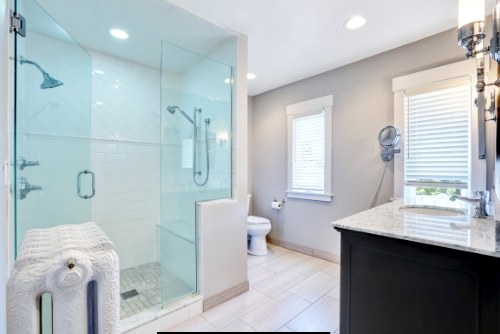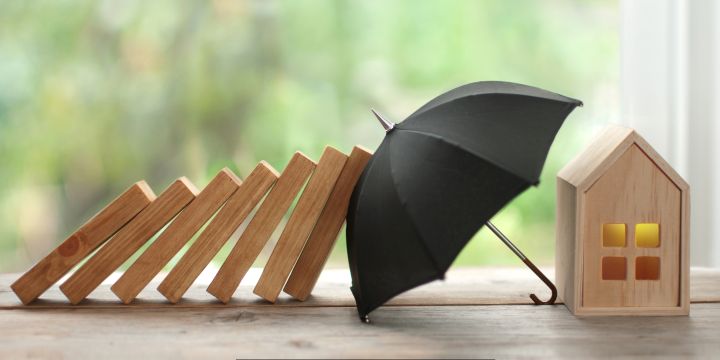Table of Contents:
- Importance of Accessible Bathrooms
- Design Strategies for Accessibility
- Technological Advancements
- Eco-Friendly Options
- Cost Considerations
- Future Trends in Bathroom Design
Importance of Accessible Bathrooms
In recent years, the architectural landscape has experienced a profound transformation, focusing more diligently on inclusivity across various aspects of residential design. One particular area that has witnessed considerable evolution is the bathroom, where changes like installing a walk-in shower have fundamentally improved accessibility. Bathrooms are more than just practical spaces; they are sanctuaries where individuals can begin and end their days with comfort and dignity. The importance of creating accessible bathrooms goes beyond convenience. These spaces play an integral role in promoting independence and ensuring safety, especially for those managing mobility impairments or the challenges that come with aging.
Given the aging population and the growing preference for aging in place, the demand for bathrooms that cater to diverse needs is rapidly increasing. Statistics indicate that a significant portion of the population will be 65 or older in the coming decades, necessitating home adaptations to maintain quality of life. Accessible bathrooms reduce the reliance on caregivers and family members, empowering individuals to manage their hygiene routines independently. This autonomy fosters a sense of control and resilience, enhancing mental well-being and quality of life.
Design Strategies for Accessibility
When designing a bathroom, achieving a harmonious balance between accessibility and aesthetics requires thoughtful consideration and innovation. Focused design efforts, including barrier-free showers, strategically placed grab bars and adjustable showerheads, are at the forefront of this effort.
Key Design Elements
- Barrier-Free Showers: These showers revolutionize traditional configurations by offering a seamless, threshold-free entry. They cater to wheelchair users and individuals facing challenges in stepping over standard obstacles. A barrier-free shower prevents accidents and enhances the bathing experience by providing freedom and security.
- Grab Bars: Essential for maintaining balance and preventing falls, grab bars are discreetly incorporated into key locations like showers, tubs, and near toilets. These bars are designed to offer support without disrupting the bathroom’s aesthetic, contributing to a sophisticated yet safe environment.
- Adjustable Showerheads: Tailoring water flow and positioning to suit personal preferences enables users to easily control their bathing experience, resulting in improved comfort and satisfaction. This simple yet effective feature underscores the commitment to individualized care.
These strategic design elements illustrate that an accessible bathroom does not compromise on style. By focusing on the user’s practical needs without sacrificing visual appeal, these designs can transform bathrooms into spaces of empowerment and relaxation. Customizations that align with a user’s needs can create a personal oasis that truly serves everyone.
Technological Advancements
Technological progress is increasingly driving the transformation of home environments, especially in making spaces smart and accessible. The emergence of smart home technology exemplifies how bathrooms can evolve into adaptive hubs of convenience and independence. Technologies such as voice-activated systems and programmable environmental controls are radically enhancing the accessibility and functionality of these personal spaces.
Advanced features like digital thermostats allow for precise water temperature management, while automated lighting systems ensure the right ambiance is set according to preference or time of day. Motion sensors can trigger faucets, reducing physical effort and minimizing water waste. By integrating such innovations, bathrooms are not just transformed into havens of efficiency but also offer increased safety features — like temperature alerts to prevent scalding — thus fostering an environment where independence is maximized.
Moreover, these technologies provide additional peace of mind for family members, knowing their loved ones can safely and comfortably manage their hygiene routines. By incorporating smart features, barriers to accessibility are dismantled, putting control back into the hands of the user and adapting intuitively to their evolving needs.
Eco-Friendly Options
The intersection of accessibility and sustainability in bathroom design is rapidly gaining traction as global awareness about environmental issues rises. Many homeowners opt for sustainable solutions contribute to resource conservation without compromising style or functionality. These eco-friendly approaches, such as water-saving fixtures, recycled materials, and energy-efficient lighting options, prove that environmentally conscious design can be practical and accessible.
Green Design Features
- Water-Saving Fixtures: By incorporating low-flow toilets and showerheads, these fixtures dramatically reduce water usage while maintaining optimal performance, providing an eco-friendly mechanism to lower both environmental impact and monthly bills.
- Recycled Materials: Using countertops made of recycled materials like glass or reclaimed wood represents a commitment to sustainability. These durable materials offer unique aesthetic qualities that enhance bathroom elegance while reducing the carbon footprint.
- Energy-Efficient Lighting: LED lighting setups cut energy consumption and allow for flexibility in ambiance creation, demonstrating that style and sustainability can coexist harmoniously within the same space.
Eco-friendly bathroom solutions contribute profoundly to a sustainable future. They reflect a growing trend towards responsible consumption and demonstrate a commitment to reducing environmental impact by adopting green principles without compromising the quality and functionality of personal spaces.
Cost Considerations
The financial aspect is a crucial consideration when planning to enhance bathroom accessibility. Many assume that embarking on such projects would require substantial investments; however, cost-effective solutions are widely available, allowing modifications to be conducted within a reasonable budget. The key lies in prioritizing changes that strike the right balance between necessity, cost, and impact.
Small yet significant adjustments, like the installation of grab bars or transitioning to a walk-in shower, can effect remarkable changes in accessibility and safety, often at a manageable cost. Furthermore, homeowners might find financial support through government grants or initiatives to promote accessible living environments, which can aid in funding such transformations. These resources make it plausible for individuals to achieve their dream of a more accessible home, regardless of budget constraints, and highlight that accessibility is an achievable goal, not a distant aspiration.
The renovation process should begin with a thoughtful assessment of individual needs and available resources, ensuring each dollar goes towards creating a bathroom that enhances everyday living and meets personal accessibility requirements.
Future Trends in Bathroom Design
Looking ahead, the trajectory of bathroom design continues to bend towards inclusivity and intuitive functionality. As technological advances unfold and environmental consciousness heightens, the industry is poised to embrace more innovative and sustainable practices. These trends predict further integration of AI technologies, facilitating enhanced personalization and accessibility.
Future bathroom designs will likely focus on creating multifunctional spaces that adapt dynamically to cater to an eclectic range of needs. This inclusive revolution will redefine what it means to have a truly accessible home, merging cutting-edge technology with attention to environmental impact and an unwavering dedication to aesthetic excellence.




